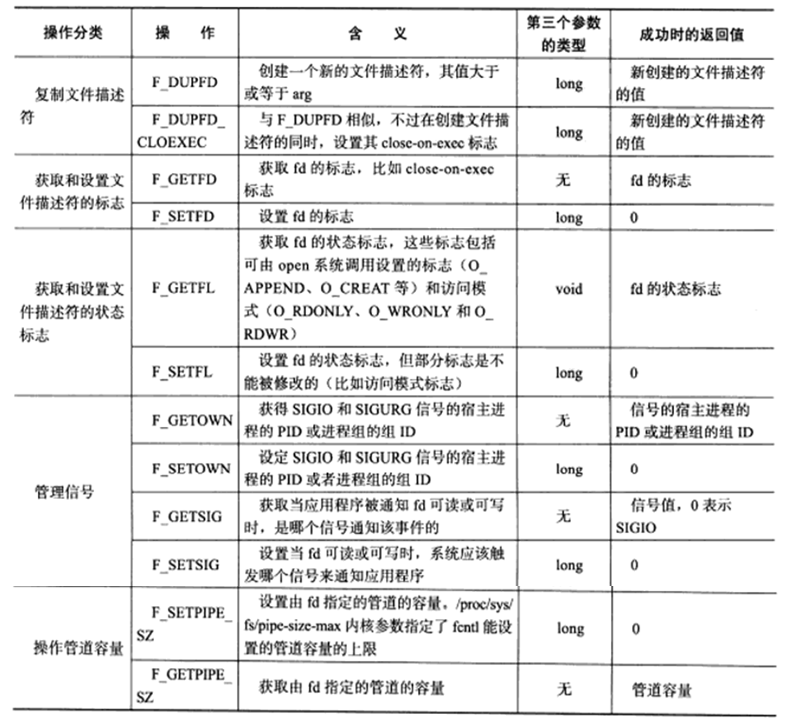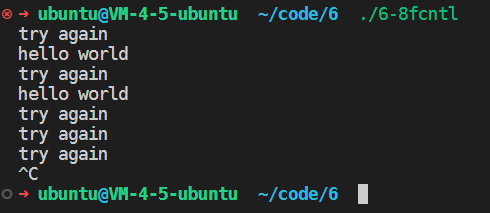fcntl函数
fcntl函数提供了对文件描述符的各种控制操作。
1 |
|
fd参数是被操作的文件描述符,cmd参数指定执行何种类型的操作。根据操作类型的不同,该函数可能还需要第三个可选参数 arg。fcntl函数支持的常用操作及其参数如下表所示。

fcntl函数成功时的返回值如表中最后一列所示,失败则返回-1并设置errno。
在网络编程中,fcntl函数通常用来将一个文件描述符设置为非阻塞的。
比如:终端文件默认是阻塞读的,这里用 fcntl 将其更改为非阻塞读
1 |
|

fcntl函数提供了对文件描述符的各种控制操作。
1 | #include <unistd.h> |
fd参数是被操作的文件描述符,cmd参数指定执行何种类型的操作。根据操作类型的不同,该函数可能还需要第三个可选参数 arg。fcntl函数支持的常用操作及其参数如下表所示。

fcntl函数成功时的返回值如表中最后一列所示,失败则返回-1并设置errno。
在网络编程中,fcntl函数通常用来将一个文件描述符设置为非阻塞的。
比如:终端文件默认是阻塞读的,这里用 fcntl 将其更改为非阻塞读
1 | #include <unistd.h> |
